Can a wall speak? Would it be a surprise if I said yes? Humanity has left its mark on the wall for millennia. Whether it is cave paintings or graffiti, walls have given a voice to people’s thoughts through generations. At BEADS we endorse this spirit of expression on walls with the “One Wall” Residency.
To express themselves, prehistoric humans drew on cave walls using charcoal and ochre or haematite. They drew symbols that represented their daily activities, religious convictions, and philosophical concepts.
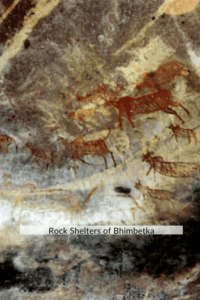

Many generations later settlements sprung up and yet the walls continued to serve as a means of expression. With time, the world saw the use of tools and technology to carve walls and even ceilings. We bear witness today to numerous locations with cave paintings, rock-cut caverns, and historical sites in India as well as globally.
Poetic Walls of India
The Indian subcontinent is most well-known for its wall paintings. Its old and still-practised wall art techniques include Warli, Bhil, and Sohrai, for which this culturally rich country of ours today sports several GI tags.
Traditionally the Warli art of Gujrat and Maharashtra is simple and linear. It draws inspiration from the social life of the tribal community. The art form uses triangular shapes in no specific perception or proportion. With its growing popularity, new forms and styles have been adopted into the practice while the old-style concepts still persevere.
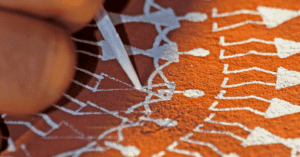

The largely agricultural community of Bhil is deeply connected with nature and this is reflected in the gorgeous Bhil Art. This striking art form is elemental in nature, often depicting the cycle of life, recording events, and folklore with people, animals and divinities as characters.
Another art form usually found in the tribal communities of Jharkhand is Sohrai art. Usually done by women of the community during harvest, this art form adorns the exteriors of mud huts. Rich in earthy colours of red, white and black, the wall shows animals and people as a tribute to nature.
A lesser known yet amazing art form on walls is that of Dongria Kandha tribe. This fascinating tribe of Odisha lives in the remote wilderness of the Eastern Ghats in Odisha. They inhabit the lofty Niyamgiri hill ranges. The community thrives amidst nature where they help each other in socio-economic activities.
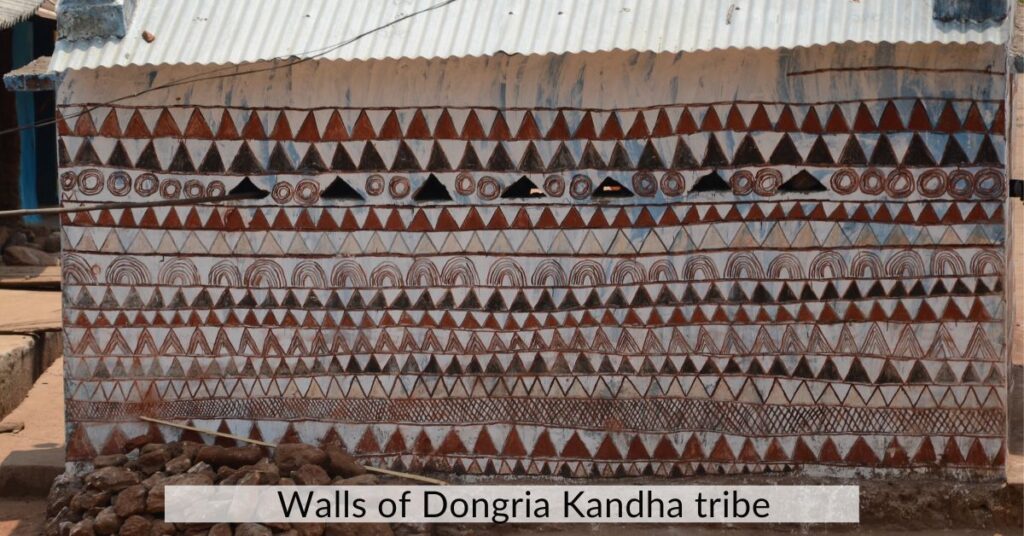
While the Kapdaganda shawls might be known to a few, their walls also have a distinctive style. The walls are covered in abundantly available red, brown, black and white colours with geometric shapes, especially triangles. The red-brown triangles epitomise Niyam Raja, the mountain god of Niyamgiri worshipped by the Dongrias. The curves characterize the roaring waterfalls and rivers flowing in the hills. The depiction of tree leaves is a representation of growing turmeric, a primary source of income for the tribe. The set of colourful diagonal lines signifies agricultural practices.
Many homes in rural Odisha sport a form of pattern making called jhoti chita on walls. Women create beautiful floral patterns using rice paste and a brush made of cloth and stick . Often elephants and footmarks of the Hindu deity Lakshmi are also drawn. These wall arts are popular during marriages and festivals.
Each wall of art serves as a telling document of the culture and tales of the land and people’s beliefs. Walls are also used as a communication channel for broadcasting messages of politics, religion and commerce.
In ancient times, Romans liked to write admonitions, jokes, political opinions, pleas, and existential ramblings on the walls of communal and private buildings. In the late 1980s, the Lennon wall in Prague was a source of frustration for the then government. The public wrote their grievances on the wall exhibiting their anger and resistance. The wall still exists with layers of writings as a statement. This wall inspired another major artwork of Hong Kong’s Umbrella Movement – a collective artistic work using colourful post-it notes filled with spontaneous expression, demanding democracy.
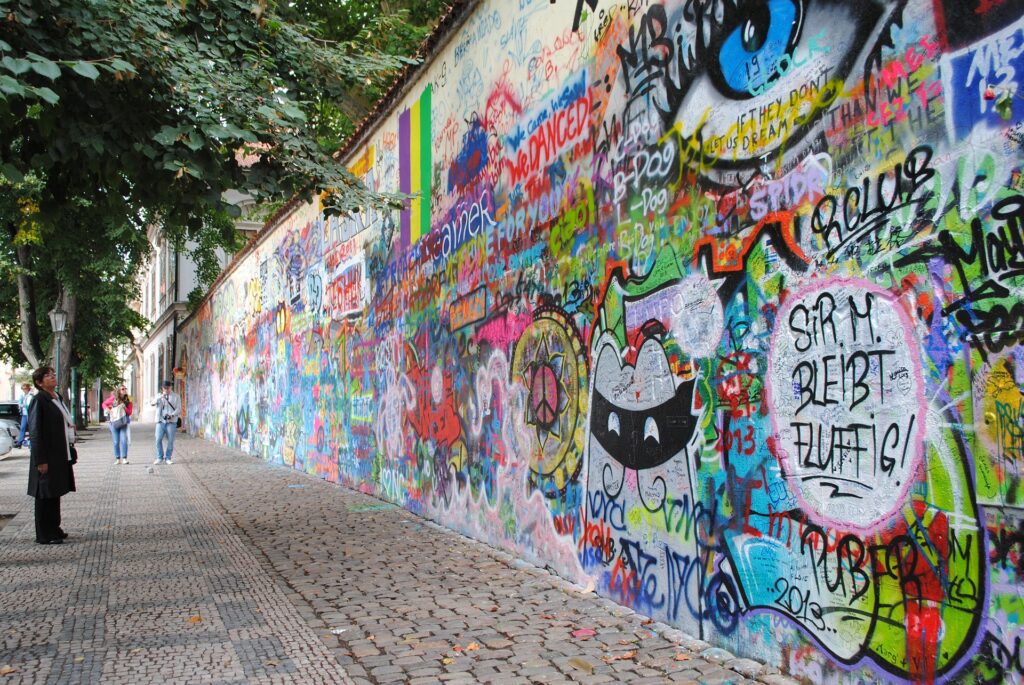
With changing times, the walls of India have also transformed. New coats of murals are donning the streets and highways of the country. The past decade has seen an explosion of street art and graffiti replacing posters of Indian cinema, commercials etc. If you ever visited the neighbourhood of Fort Kochi or Pondicherry’s French Colony you can experience something akin to an open-air art gallery. Taken too far, however, the new city wall art adds to the extant visual clutter and is an eyesore. A case for Indian craft blended with clever design interventions can be made for better urban aesthetics.
If these walls of human civilization have spoken intricate stories of history, lifestyle, and socio-economic growth, why should we not lean on the mighty power of ethnic storytelling through craft practices? After all, nothing speaks more powerfully of a space and its people than its indigenous art practices.
BEADS’s ONE WALL
At BEADS we have a strong belief that walls with art hold the power to bring a fresh perspective encouraging creativity and imagination in the public. Seldom do people take a break from the monotony of life to appreciate the world around them.
In the words of Julius Das, the curator of the “One Wall” Residency- “ ONE WALL is a Happening* that raises awareness about the existential challenges that impact us all – pandemic, economic decline, climate change etc. A meaningful and valuable co-place that positively connects the present, historic matters and the future as a source of transforming information.”
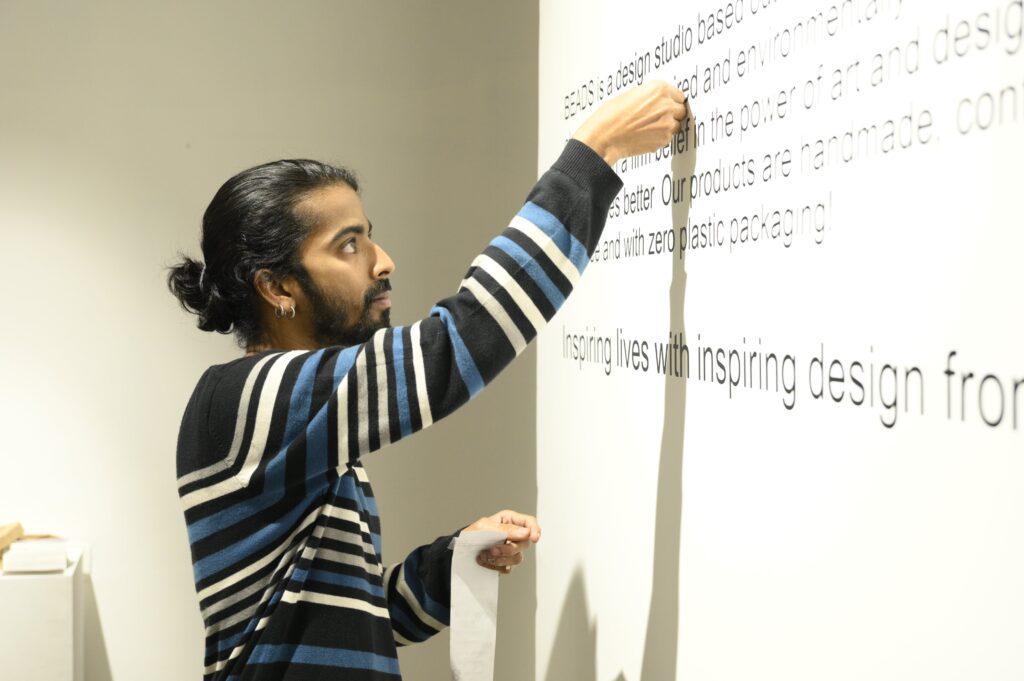
This Artist Residency at BEADS is a unique opportunity for artists and designers to develop ideas and practices in a creative direction. The programme offers time, space, and opportunity to grow in a professional environment with a rich combination of artistic and professional resources. It is open to both medium-specific and cross-platform modes of creation that aim for the intersection of art and ideas. The residency fosters a culture of rigorous practice and contemporary thought. In addition to focused work in the studio, residents attend gallery walks, museum visits, and workshops that support professional art practice. The Artist in Residency will be inspired by artists and academics to advance their work intellectually and aesthetically through focused creative engagement with modern art history.
Our first Artist in Residency, Abhishek Chakraborty walked into the studio with the determination to create something unique and interesting on the wall. In a whirlwind of 10 days, he had successfully worked on conceptualizing, designing and crafting the wall into a spell binding bamboo terracotta homage to the city’s heritage under siege from urban development. His ‘Untitled’ work was the pièce de résistance of the studio open day organised at the BEADS space and was universally praised by the attendant public. Currently, the work is listed on the website for sale.
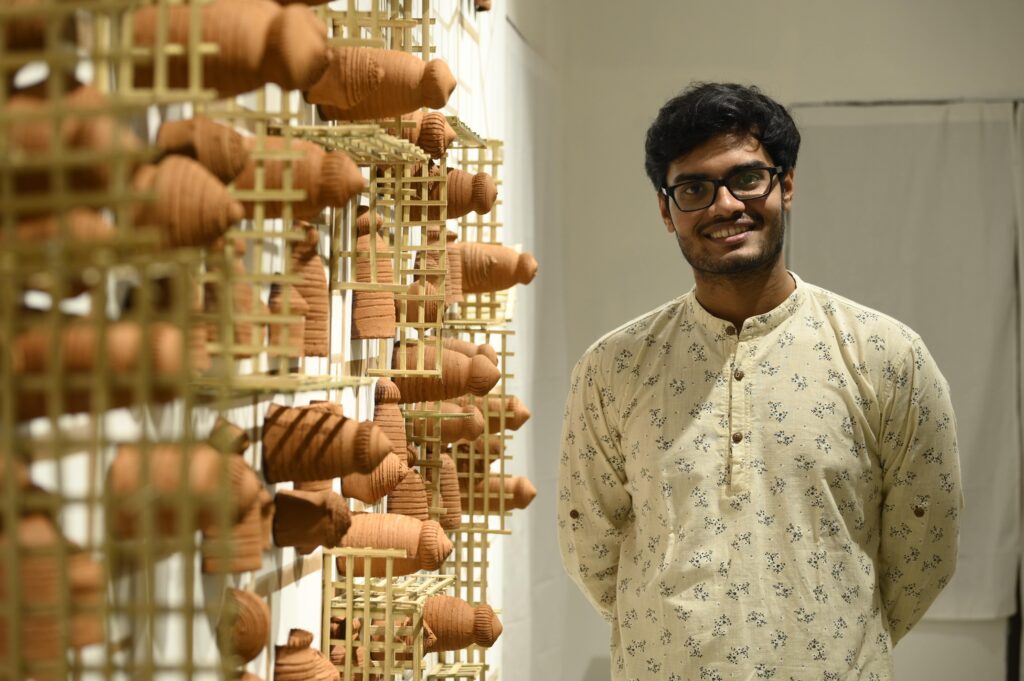
Like Das mentions, with “One Wall” we intend to challenge the superficial acceptance of mass culture and dependence on technology to improve skills. We must find the intersection for pre-industrial place-based productions, to reconnect with the common man and market.

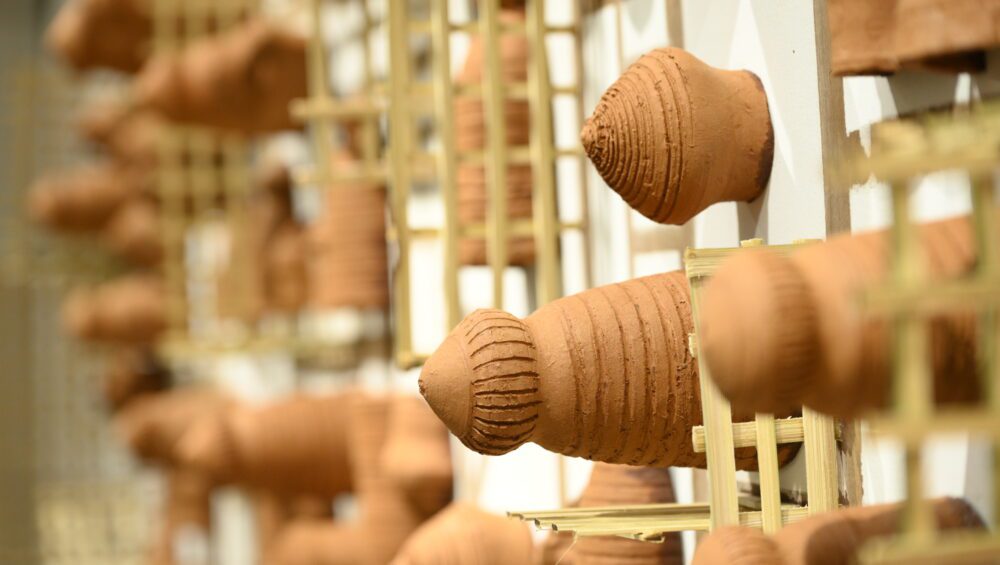








1 thought on ““One Wall” compels artists, designers and the public to perceive anew”
This article offers a fascinating perspective on the subject. The depth of research and clarity in presentation make it a valuable read for anyone interested in this topic. It’s refreshing to see such well-articulated insights that not only inform but also provoke thoughtful discussion. I particularly appreciated the way the author connected various aspects to provide a comprehensive understanding. It’s clear that a lot of effort went into compiling this piece, and it certainly pays off. Looking forward to reading more from this author and hearing other readers’ thoughts. Keep up the excellent work!